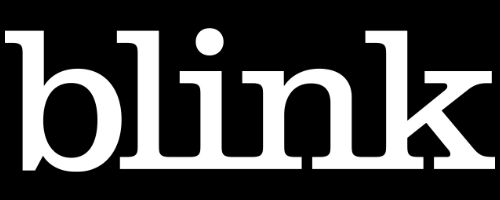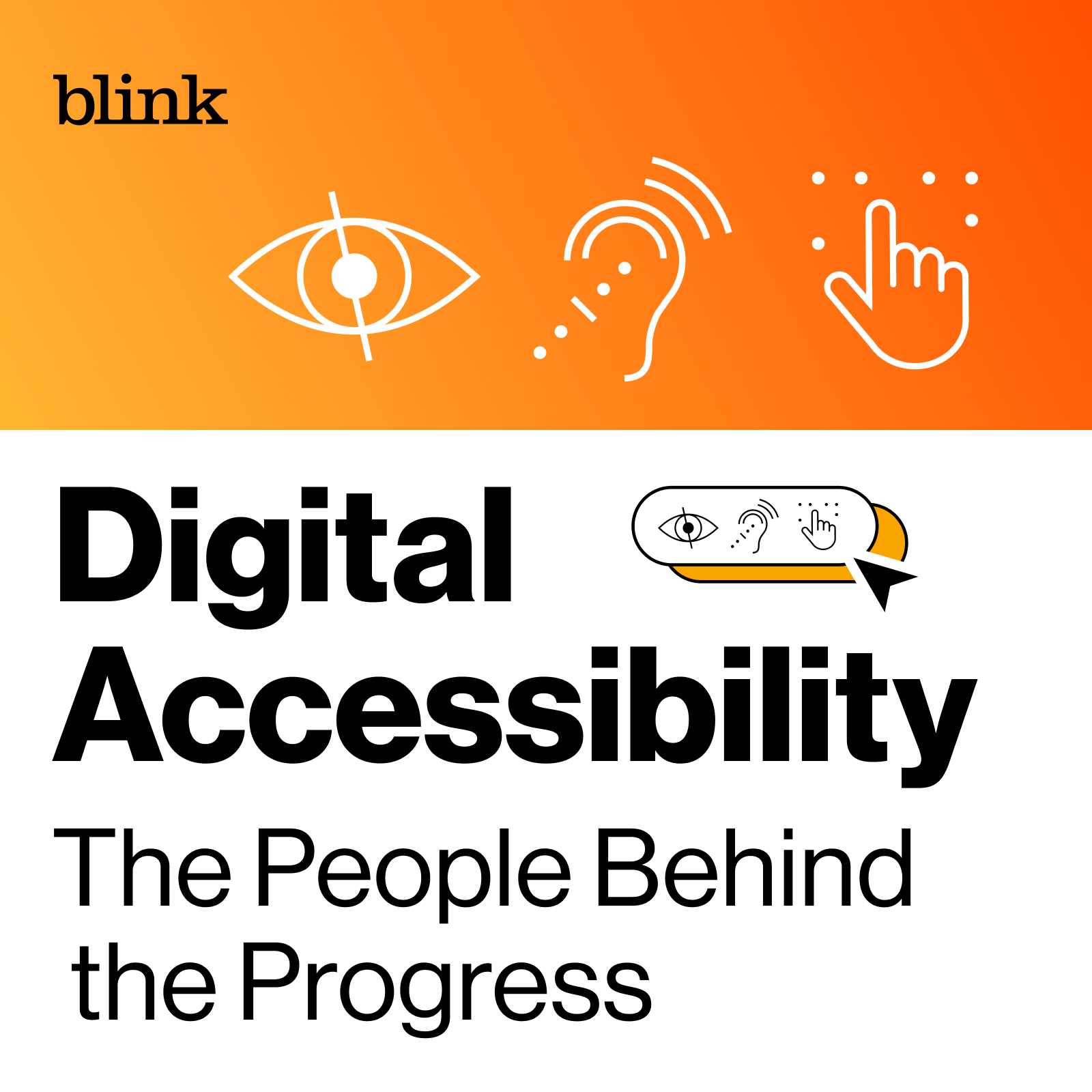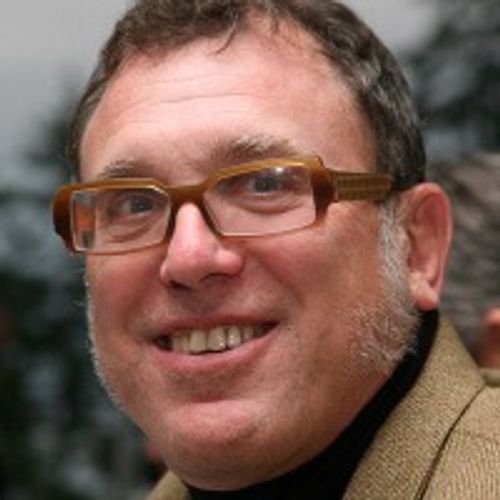Episode 6
Negotiation, Leadership and Other Soft Skills Help to Become an Accessibility Professional
Rajesh Kalidindi, independent, Accessibility & User Experience Consultant
Rajesh Kalidindi enables individuals and corporations through his accessibility consultancy by providing training, comprehensive validations, VPATs, usability studies, empathy workshops, etc. He began as a multimedia designer and moved into UX. Joining Microsoft, Rajesh found a passion for inclusive experiences that lead to learning about standards and observing users' challenges in usability studies. He enjoys presenting at conferences.
Mentioned in this episode:
Info about Accessibility at Blink
Transcript
(bright music)
Speaker:- Hello, this is Digital Accessibility:
Speaker:the People Behind the Progress.
Speaker:I'm Joe Welinske, the creator and host of this series.
Speaker:And as an accessibility professional myself,
Speaker:I find it very interesting
Speaker:as to how others have found their way into this profession.
Speaker:So let's meet one of those people right now,
Speaker:and hear about their journey.
Speaker:All right.
Speaker:Well, I'm Joe Welinske,
Speaker:and we're going to get into another episode,
Speaker:where I have the opportunity
Speaker:to talk with an accessibility practitioner.
Speaker:And today, I am speaking with Rajesh Kalidindi.
Speaker:Hello Rajesh.
Speaker:How are you today?
Speaker:- Fantastic, Joe.
Speaker:How are you doing?
Speaker:- I'm doing okay.
Speaker:Everything's going well.
Speaker:I'm at my usual place, remotely,
Speaker:which is my home office on Vashon Island in Washington,
Speaker:which is very near Blink's Seattle headquarters.
Speaker:Where are you talking to us from?
Speaker:- Same, home office in the Seattle area, you know,
Speaker:enjoying the work from home benefits.
Speaker:- Well, it's great to have you part of this podcast.
Speaker:I'm looking forward to learning a little bit more about you.
Speaker:We have met before, and known each other for a while.
Speaker:But for those of you that may not be familiar with you,
Speaker:and your work,
Speaker:why don't you start by talking
Speaker:about what you're doing right now?
Speaker:- Sure.
Speaker:Thanks for having me on this podcast.
Speaker:You're doing fantastic job
Speaker:of bringing multiple accessibility professionals
Speaker:together in this series.
Speaker:So right now,
Speaker:I am providing accessibility consulting services
Speaker:for clients..
Speaker:That includes training,
Speaker:on how to integrate accessibility guidelines
Speaker:into their design development processes,
Speaker:and also doing validations and repads,
Speaker:and mentoring those who are coming into the field,
Speaker:and also doing executive coaching,
Speaker:and giving presentations like this, in conferences as well.
Speaker:- Yeah, well, I know you're very involved
Speaker:with getting, with participating in conferences,
Speaker:and you've done that for a long time.
Speaker:Just what's it been like, you know,
Speaker:most recently with the pandemic?
Speaker:Obviously, you know, most things went to remote,
Speaker:virtual events,
Speaker:and now we're starting to have some physical events.
Speaker:What's it been like for you,
Speaker:in terms of giving talks at various conferences?
Speaker:- I think, you know, the pandemic taught us a lot,
Speaker:in terms of presenting, as well as hosting,
Speaker:these kinds of conferences.
Speaker:So the benefit is that now we are connected globally,
Speaker:truly connected globally,
Speaker:because I don't need to travel anywhere,
Speaker:to give a presentation, or to attend.
Speaker:But after two years, you know,
Speaker:not seeing, physically, people,
Speaker:the connection, you know the human connection is missing.
Speaker:That is what I'm looking for the in-person conferences,
Speaker:as well, where you can really meet people,
Speaker:and understand what they are, who they are,
Speaker:and how they are bringing change into the world,
Speaker:at a personal level connection.
Speaker:So I think for quick conversations,
Speaker:these remote conferences are good.
Speaker:But if you want to make any deep connections,
Speaker:I think, you know,
Speaker:still we are there in the in-person meetings
Speaker:and the conferences.
Speaker:- Well, one of the things
Speaker:that I like to get into in this program,
Speaker:is find out how people found their way
Speaker:into accessibility as a profession.
Speaker:Sometimes it's lived life, or work life, or a combination.
Speaker:How did it start for you?
Speaker:- It's a long story.
Speaker:I'll try to make it as short as possible.
Speaker:I started my career as a multimedia designer,
Speaker:and then transitioned into the web design,
Speaker:and the user experience design.
Speaker:But it almost, like 14, 15 years back,
Speaker:when I joined Microsoft,
Speaker:this is where my soul searching has happened.
Speaker:With the support and motivation
Speaker:from my managers at Microsoft,
Speaker:I found that I have a passion
Speaker:for making the experience for aged population,
Speaker:and as well as the people with disabilities.
Speaker:That is where I got the support to learn how to do it,
Speaker:by learning the standards,
Speaker:as well as observing the people with disabilities,
Speaker:how they use the experiences.
Speaker:So I have tried a couple of years,
Speaker:while doing the UX design and research,
Speaker:mainly the usability studies helped me a lot,
Speaker:to learn what it takes,
Speaker:to make the digital world inclusive for everyone.
Speaker:Mainly the Communication Video Accessibility Act, the CVAA,
Speaker:me a jumpstart to transition my career,
Speaker:from the UX discipline, into the accessibility discipline.
Speaker:So since then, I have been learning many skills,
Speaker:in terms of developing these inclusive solutions.
Speaker:More than the technical knowledge,
Speaker:I think the soft skills helped me a lot,
Speaker:to grow into the accessibility profession.
Speaker:There is a lot of convincing that needs to be done,
Speaker:in terms of prioritizing accessibility standards
Speaker:into the work.
Speaker:The negotiation skills, and the leadership skills,
Speaker:and many other soft skills help me a lot,
Speaker:to become a accessibility profession.
Speaker:So I spent many years after that CBAA at Microsoft,
Speaker:and then I took that experience
Speaker:into a non-technology company,
Speaker:and led an initiative at Liberty Mutual Insurance,
Speaker:for a couple of years.
Speaker:And now I am helping clients,
Speaker:and other people who are coming into the profession,
Speaker:as an independent consultant.
Speaker:- You mentioned your work at Microsoft,
Speaker:and then with Liberty,
Speaker:and you mentioned research and usability testing.
Speaker:I think a lot of people that maybe new to accessibility,
Speaker:often just are hearing about compliance, and audits,
Speaker:and remediation, maybe not as much about the value
Speaker:of what we can find in research, and usability testing.
Speaker:Maybe you could talk a little bit
Speaker:about your experiences with, you know,
Speaker:what that consisted of,
Speaker:not necessarily specific to those organizations,
Speaker:but maybe if you have just some general thoughts
Speaker:about the value, and the types of things
Speaker:that went on for those activities.
Speaker:- Absolutely.
Speaker:I think the standards, or the guidelines,
Speaker:show the path
Speaker:of how you can make your experiences inclusive.
Speaker:But unless we observe how this is being used,
Speaker:so you learn a little bit of, you know, from the guidelines,
Speaker:and then you start implementing, to make it inclusive.
Speaker:But unless this is put to the test,
Speaker:or unless you see the person actually using it,
Speaker:you don't know whether all the guidelines
Speaker:that you put into the work,
Speaker:is really meaningful to the user or not.
Speaker:So I have learned a ton,
Speaker:by observing people actually using the solution,
Speaker:and found many creative ideas,
Speaker:about how we can tweak it to make it more usable.
Speaker:So I think the guidelines are a good starting point,
Speaker:where you can start thinking about accessibility,
Speaker:but actually testing it with users,
Speaker:without observing how they use it,
Speaker:will not make it completely, you know, a solution.
Speaker:- Well, going to, you know, from the, you know,
Speaker:the research and usability testing area,
Speaker:one of the things I notice,
Speaker:that you list for your services for clients,
Speaker:is coaching organizations, and individuals,
Speaker:to have mature accessibility programs.
Speaker:Can you talk a little bit about what that consists of?
Speaker:- It depends on where the organization is in, you know?
Speaker:So sometimes, we may start with validating
Speaker:what the existing solutions are, and finding the gaps,
Speaker:and then fixing, initially, what we found,
Speaker:and then build upon how you can enhance these experiences
Speaker:by integrating accessibility into the left.
Speaker:So, you know, in the industry,
Speaker:there is a term called shift left, right?
Speaker:So as part of this shift left,
Speaker:slowly transitioning the organization
Speaker:into integrating into the design process,
Speaker:and then developing process,
Speaker:as well as helping the management,
Speaker:how to measure this work,
Speaker:The amount of work that is being done,
Speaker:and how they can measure,
Speaker:in terms of making it more inclusive,
Speaker:not just being compliant,
Speaker:with the guidelines, and the regulations,
Speaker:but also how they can transition
Speaker:from compliance, to the usable solutions.
Speaker:So the journey varies from different angles.
Speaker:Sometimes the journey
Speaker:starts with,
Speaker:a customer might have logged a complaint.
Speaker:And you know, handling that compliant.
Speaker:And from there you transition
Speaker:into a truly inclusive world.
Speaker:Or, you know,
Speaker:sometimes the UX people have a lot of empathy
Speaker:for people with disabilities,
Speaker:and the champions come forward to work on accessibility.
Speaker:That is my journey where, you know,
Speaker:I was the champion for accessibility,
Speaker:and then matured and transitioned
Speaker:into the accessibility world.
Speaker:So these are different flavors.
Speaker:Wherever you start,
Speaker:you need to make sure that you have pieces,
Speaker:like you know, your resources,
Speaker:the people who are working, having enough skills,
Speaker:and having enough tools,
Speaker:and also, most importantly, empathy for the end users,
Speaker:how you can build that empathy into the people
Speaker:who you are working with.
Speaker:So these are the main buckets I would call,
Speaker:to make it you know, to help our organizations.
Speaker:- Well you've been involved in accessibility
Speaker:for quite a while now.
Speaker:As you look back on on where you started,
Speaker:and where we are today,
Speaker:are there certain areas where you're kind of amazed
Speaker:that we've gotten to where we are?
Speaker:Or on the other side of it, are there some areas
Speaker:where you're concerned
Speaker:that maybe we haven't invested enough,
Speaker:or we still have a lot of work to do?
Speaker:Any thoughts about kind of, you know,
Speaker:where you'd like to see things go in the future?
Speaker:- Fantastic question.
Speaker:Accessibility has been there in the United States,
Speaker:for almost like, you know, 30 years.
Speaker:But my involvement only in the last decade or so,
Speaker:as a full time profession.
Speaker:But in the last decade, I have seen,
Speaker:when I started,
Speaker:people were not paying to attention
Speaker:to the accessibility much.
Speaker:And since then,
Speaker:I have seen a lot of interest, and also,
Speaker:a push, or a motivation,
Speaker:to make the solution, the digital solutions, inclusive,
Speaker:across multiple industries.
Speaker:So in my observation,
Speaker:multiple things might have contributed to this.
Speaker:I think lawsuits, many lawsuits, you know,
Speaker:exponentially increased in the last 10 years.
Speaker:That might have paid attention to accessibility.
Speaker:And also, strong leaders in the industry,
Speaker:being in the big corporate companies like Microsoft,
Speaker:to Google, IBM, and then Salesforce.
Speaker:A lot of other companies also started paying attention.
Speaker:And there are so many other companies.
Speaker:The technology companies have taken the stand,
Speaker:in making accessibility more of a priority.
Speaker:I cannot say that, you know,
Speaker:it was not a priority before, it was.
Speaker:But I think the focus is increased on accessibility.
Speaker:That might have, you know, contributed the focus.
Speaker:And the rest of the technology world
Speaker:is also paying attention.
Speaker:And also, the advocacy groups being very vocal,
Speaker:and the actual people with the disabilities,
Speaker:also started becoming vocal,
Speaker:in terms of their experiences,
Speaker:talking openly about their disabilities,
Speaker:on multiple social platforms.
Speaker:So from all these angles, I think, you know,
Speaker:in helped a lot, big jump in terms of, you know,
Speaker:attention on accessibility.
Speaker:Well this is good progress,
Speaker:but there is a lot to be done, you know?
Speaker:In terms of not just disabilities that are notable,
Speaker:there is a lot of work to be done,
Speaker:in terms of the invisible disabilities as well.
Speaker:And you know, the aged population,
Speaker:also there is a lot of work to be done.
Speaker:So there are a lot of inventions happening right now,
Speaker:using artificial intelligence,
Speaker:to enable the various needs.
Speaker:So there is a lot of complexity also, I see,
Speaker:when a person with, you know, having multiple needs.
Speaker:There are multiple solutions that need to be relied on.
Speaker:So how can these things can become intuitive
Speaker:for the end user?
Speaker:My mantra is to make the simple experiences,
Speaker:but it takes a lot of effort to make, you know,
Speaker:experience very simple, right?
Speaker:So I think there is a lot of work to be done,
Speaker:in terms of making it easy for real users,
Speaker:and how it can become intuitive.
Speaker:And there is a lot of innovation,
Speaker:that also needs to be done,
Speaker:in terms of enabling many other personas,
Speaker:that we have not touched upon.
Speaker:- Well are there,
Speaker:you've always been involved in the community,
Speaker:in doing a lot of different activities.
Speaker:We can definitely have information in the show notes,
Speaker:where people can find out more about you.
Speaker:But are there any things coming up,
Speaker:that you wanna talk about, about new activities
Speaker:or talks that you might be giving at conferences?
Speaker:- Yeah, I'm looking forward to the CSUN,
Speaker:in San Diego, 2023.
Speaker:And I'm also looking forward
Speaker:to the for the User Experience Professionals Association,
Speaker:the Annual International Conference, in Austin.
Speaker:Those are my to-go places, almost like every year.
Speaker:But in addition to that, you know,
Speaker:there is an Inclusive Design Conferences coming up.
Speaker:I'm looking forward for that content.
Speaker:Many professionals are going to present.
Speaker:Those are the three things that come to mind,
Speaker:in terms of, you know, what I can look for,
Speaker:in the rest of the 2023.
Speaker:- All right, great.
Speaker:Well, we'll make sure we have links in the show notes,
Speaker:so people can find you.
Speaker:But Rajesh,
Speaker:it's been a great to have this opportunity to chat with you.
Speaker:And I look forward to hopefully seeing you
Speaker:at one of those physical events in the future.
Speaker:- Yep.
Speaker:Thank you so much for the opportunity, Joe.
Speaker:and I'm looking forward to seeing you,
Speaker:and many other professionals,
Speaker:either virtually are in person.
Speaker:- All right, thank you.


